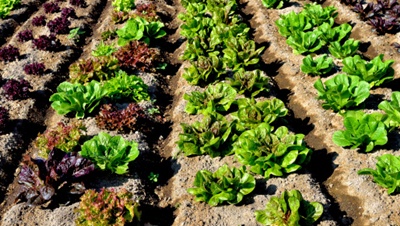
The garden is the perfect metaphor for life. You plant the organic seeds, you watch the days pass and with patience, you reap the delicious rewards the crop brings.
Fresh, organic and high-quality health foods you get from all that effort really is the best reward. But there are other hidden benefits as well: Growing your own is a great cost-saving measure. You get lots of fresh air, hours of outdoor exercise and you get to experience nature at its finest!
The trick is finding the time to get started and planning it out. It can feel like a daunting task for those who have never prepared a garden before. Where do you begin? What if you don’t have the proverbial green thumb? Here, a few tips to get you started. Get growing!
Dig in! Choose the Right Equipment
You want to start an amazing garden and it should really be a fun experience! One of the big questions that might have crossed your mind is what equipment should you have on hand? Quality gardening equipment will save you time and money in the long run. Check out your local gardening supply or home improvement stores for good deals to get you started. ’Tis the season.
Essentials include a watering can, hose, wheelbarrow, trowel, roundhead shovel, rake, shears and a pitchfork. Each tool has a unique job. For instance, the trowel helps for weeding and making small holes, while the roundhead shovel will create large holes. Of course, don’t forget to add the gardening gloves and a sun hat.
Pick a Location
Where are you gardening? Is it on the porch or windowsill of your apartment or is it in your spacious backyard? Find a sunny spot for optimal results.
There are a wide variety of gardens out there, too. The garden in your backyard will provide the opportunity to plant countless vegetable varieties because of the versatility of the natural ecosystem.
City dwellers in high-rises might enjoy the container garden option. The best vegetables for a container garden include peppers, bush beans and tomatoes. Carrots and beets are not so suitable because of their deep roots. Container gardens are also great for herbs such as oregano, basil or rosemary, so you can go from sill or deck—snip snip—to your dinner table in no time! Just about any container does the job, such as clay pots, wooden barrels, plastic bins, planter boxes or even hanging planters. Your best location for your garden should be facing south, so it will receive approximately six hours of direct sunlight on a daily basis.
Don’t Overwhelm Yourself
While you’re likely excited about your new garden, take time to start with a plan: What are your gardening goals? Are you looking to get all of your produce from your garden? It all depends on your space. For a container garden, it is important not to overplant which leads to a weak harvest.
Keep in mind that some vegetables like tomatoes or peppers will produce multiple growing crops, whereas others such as corn or carrots may have to be planted on multiple occasions. To avoid wasting food (no one wants to trash their own harvest!), start with a small garden. After your first experience, you will be able to determine how much more you can plant the following growing season.
Prepare Your Soil
You only have true success with your garden when the soil is just right. Soil that is good for circulation is well aerated, free of stones and contains plenty of organic matter. Aged manure or compost helps provide beneficial nutrients to your vegetables. Also, be sure to use compost if your soil doesn’t drain or hold moisture well, or if it’s too thick.
For the best quality soil, test its pH, the measure of acidity or alkalinity that affects how easily plants will absorb nutrients. Most plants tolerate a fairly wide range of soil pH, from 6.0 to 7.5 is suggested. You can pick up a pH test from any garden center. To make your soil less acidic, bone meal or wood ashes work, while peat moss or pine needles can help balance soil conditions that are alkaline.
What is the most important thing you should know about gardening? Simply… have fun. If you don’t enjoy it, it’s not worth the work and your vegetables will just be vegetables, not the delicious masterpieces you have created (with a little help from Ma Nature). Gardening is certainly about the rewarding experience of growing and eating—with these tips you will be an expert in no time!
Sources:
Sigler, J., “A Beginner’s Guide to Fruit and Vegetable Gardening,” SparkPeople web site; http://www.sparkpeople.com/resource/nutrition_articles.asp?id=1292, last accessed April 25, 2014.
Iannotti, M., “Gardening Basics – How to Start a Garden,” About.com web site; http://gardening.about.com/od/gettingstarted/tp/How-To-Start-A-Garden.htm, last accessed April 25, 2014.
Roth, J.D., “7 Tips for Starting Your Own Vegetable Garden,” Get Rich Slowly web site, January 11, 2009; http://www.getrichslowly.org/blog/2009/01/11/7-tips-for-starting-your-own-vegetable-garden/.
“How to Plan a Vegetable Garden,” Better Homes and Gardens web site; http://www.bhg.com/gardening/vegetable/vegetables/planning-your-first-vegetable-garden/#, last accessed April 25, 2014.












